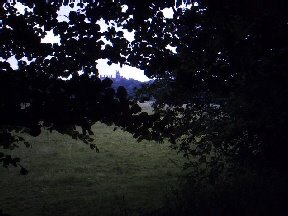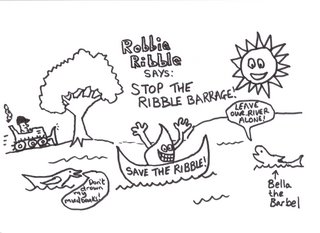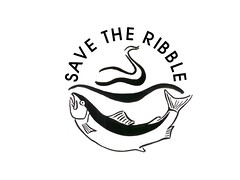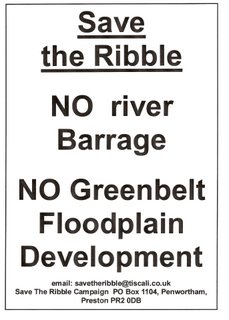Lower Brockholes is a beautiful ancient farmland on the Preston side of the M6, and is bordered by several Biological Heritage Sites including the ancient Brockholes Wood, Brockholes Meadow, and the River Ribble. As such, this farmland is part of a broader ecosystem and itself offers diverse habitats, including mixed grasslands, hedgerows, small streams, and mature trees, supporting numerous bird, mammal, and insect species – including several species of bird on the RSPB Red List of farmland birds considered at serious risk due to the dramatic ongoing decline in their numbers.

Lower Brockholes 17th Century farmhouse in its historic farmland setting.
Lower Brockholes also offers local people access to a beautiful and safe area of historic English countryside within the motorway boundary. This ancient farmland with its Grade II listed 17th Century farmhouse is an important part of our local heritage, Brockholes having been farmed by local people for at least 400 years. Brockholes is also the site of a skirmish with the Scots in the 14th Century, during which Scottish troops attacked the ferry near Brockholes and burned down Samlesbury church.
Since the Brockholes estate was split into two by the motorway, in the usual “new road = new development” scenario, the first quarry on the east side has gone ahead, contributing to the further decline of this estate. Now the integrity and character of the site next to Preston is under threat from another proposed gravel quarry, which will destroy most of what remains of the last intact section of this ancient estate. See our post
Concrete, Concrete EverywhereThe Birds and the Bees.Whilst the existing quarry is proving a draw to river-based birds, it is at the expense of the farmland birds and other animal species which have had their habitats depleted as a result.
Lower Brockholes supports a diverse ecosystem, at the top of the food chain are its Birds of Prey such as Hobby, Buzzards, Barn Owls, and Kestrels. Barn Owls, Hobby and Buzzards rely on the open farmland interspersed with mature trees, and all these birds between them feed on the insects, small birds, and small mammals which are abundantly supported here.
The farmland birds species at Lower Brockholes include Tree and House Sparrows, on the RSPB Red List of species currently in serious decline, and who rely on open farmland with free standing trees and hedgerows; Starlings, also on the RSPB Red List, favour arable fields and pasture, open woodland and hedgerows (and the flock which inhabits this area has itself been reducing in number over recent years); Swifts, House Martins and Swallows – Swallows are on the RSPB Amber list as these birds are in decline and also favour open pasture and traditional farmland near water; both Willow Warbler and Sedge Warbler, favouring hedgerows and tangled undergrowth and scrubland near water; both Green and Great Spotted Woodpeckers, Green Woodpeckers specifically favour farmland and open woodland; and Heron are amongst a number of river-based birds who also feed or breed on this farmland.

Starlings at Lower Brockholes this summer.
There are numerous bats, mice, voles, shrews, and other mammals, between them relying on the mature trees, hedgerows, grassland, and the insects, seeds and berries they find there.
The significance of the ongoing depletion of insects is finally being realised (see
www.buglife.org.uk ), and the countless species supporting the ecosystem here include various species of bees, butterflies and moths, beetles and flies, some of which are also under threat nationally (see
www.bumblebeeconservationtrust.co.uk ).

Hedgerows, mature trees, mixed grasslands, wildflowers, and streams ensure this historic farmland offers a diverse habitat to our native bird, animal, and insect species...


 Flood Defences.
Flood Defences.Lower Brockholes is also on the Ribble floodplain, and just as
Coastal Saltmarsh provides effective flood protection for coastal areas from exceptionally high tides and sea level rises, green belt land on floodplains provide a safety area during heavy rains and high tides, absorbing and holding a significant amount of water both on and beneath the surface of the land and as such, a lake here instead of farmland will contribute to the already “significant flood risk” (Environment Agency) to communities on the Ribble floodplain.
A lake here could affect the water table in the area in the long term, particularly if added to a permanently raised river level if the Ribble barrage is ever built, potentially contributing to higher water levels across the rest of this floodplain area, putting local housing – including the Grade II listed 17th Century Lower Brockholes farmhouse - at risk as well as decreasing the area’s capacity to deal with high rainfall and river flooding.
Riverworks, The Ribble Barrage, and Brockholes.The lake this quarry will leave is intended to complement the Riverworks barrage scheme as the contractors, Hargreave Ash Marketing Ltd, claim ‘the site is able to offer Lancashire an additional recreational or nature conservation facility that will contribute positively to the aims of Preston City Council’s “Riverworks” Project… centred on the development of a River Ribble barrage that will maintain a constant water level and provide an environment attractive to inward investors’ (
Non-Technical Summary ).
They suggest this lake may be used for fishing – although there is something horribly farcical in promoting the creation of a fishing lake achieved by extracting the gravel to build the barrage which will put the Ribble’s fish species at risk…!
Preston City Council’s “Riverworks” document for the
Riverside East development (document 05) which states the intention for East Preston is to establish ‘a major outdoor leisure resource’ which will include riverside ‘connection with the former Brockholes Quarry site’, and ‘will offer water-based recreation pursuits, enabled and supported by the barrage’ (Riverworks “Riverside East” 05).
Yes, fishing is popular… but is it the ‘major’ draw to Brockholes PCC are suggesting…? Or are we looking at a potential water-sports facility here…? Once the lake exists, who is to say we won’t then see an application to run a water-sports leisure complex here, or build a marina…?
Regardless of its final use, destroying a significant section of ancient farmland habitat to create a quarry and lake will cause adverse environmental impact, both immediately and in the long term.
When aggregate is needed for appropriate developments, surely all contractors should be forced to follow the example of the enlightened few and ease the constant pressure on our natural resources by using
recycled aggregate for new building projects rather than continue to destroy our ever-depleting green belt by quarrying for our limited resource of primary aggregates?
Another gravel quarry at Lower Brockholes would destroy a significant section of ancient traditional farmland and green belt which contributes to the ecosystem of the broader area, contributes a valuable local amenity and flood defence, and is an important remaining piece of our local and national heritage which should be preserved.Click to view the
Hargreaves Ash Brockholes Quarry Planning Application and map of the proposed quarry site.
Any objections to this Planning Application should be with Jonathan Haine, Planning Officer, Lancashire County Council Environment Directorate, Guild House, Cross St, Preston PR1 8RD by 8th August.
Labels: brockholes


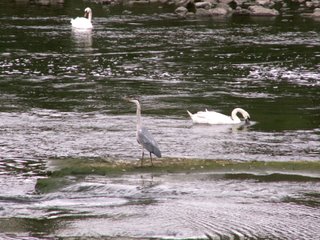
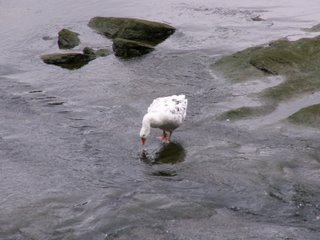





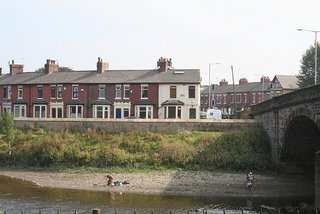


 Cows graze within minutes of Preston City Centre
Cows graze within minutes of Preston City Centre





